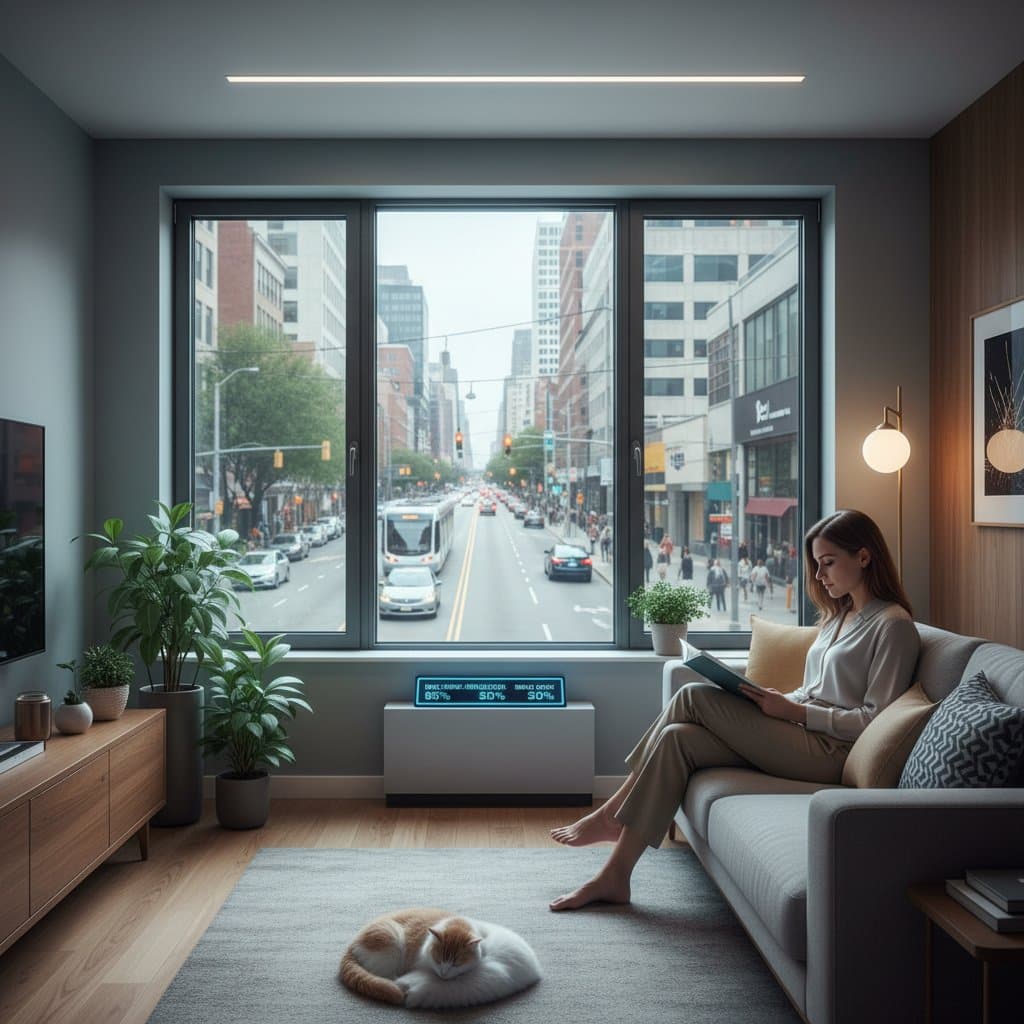Self-Tinting Windows Reduce Cooling Costs by Up to 60 Percent
Smart materials continue to reshape residential comfort and energy management. Self-tinting windows, commonly known as smart glass, lead this innovation. These windows adjust their tint automatically in response to sunlight levels, which lowers indoor temperatures and decreases reliance on air conditioning. For families facing elevated energy expenses in warmer seasons, the potential to reduce cooling costs by as much as 60 percent represents a significant advancement. In addition to financial benefits, this technology improves exterior appearance through its refined, contemporary design.
Benefits of the Design
Homeowners seeking streamlined profiles and current aesthetics find self-tinting windows particularly suitable, as they preserve functionality. The gradual change in glass opacity provides an elegant touch and removes the necessity for cumbersome window coverings. Viewed from outside, the glass presents a consistent facade throughout the day, contributing to a refined overall exterior. Within the home, occupants experience prompt relief from glare alongside stable thermal regulation.
Three Implementation Strategies
Budget-Conscious Strategy ($5,000 - $10,000)
- Select hybrid configurations that integrate fixed smart glass sections with traditional double-glazed units in secondary locations.
- Apply tinting films or reflective treatments to auxiliary windows, while allocating self-tinting features to key areas like living rooms.
- Prioritize self-tinting installation on south-oriented windows, which receive the most direct sunlight, and retain standard glazing in other positions.
Moderate Investment Strategy ($15,000 - $25,000)
- Equip primary areas, including living rooms and kitchens, with self-tinting glass, complemented by energy-efficient low-emissivity coatings in sleeping quarters.
- Choose frame options in black or bronze hues to align with modern visuals and enhance street presence.
- Incorporate user-adjustable controls for tint modulation, allowing customization based on varying light conditions.
Comprehensive Upgrade Strategy ($30,000 - $50,000)
- Install self-tinting glass across the full property to optimize energy performance and secure enduring cost reductions.
- Integrate with home automation systems that adapt tinting to meteorological data, operating autonomously.
- Opt for superior aluminum or composite framing with durable finishes that withstand environmental exposure and introduce refined structural elements.
Selection Guide for Materials and Finishes
Windows
Select self-tinting glass featuring neutral gray or subtle blue tones to achieve a modern vibe. Frames in black, bronze, or charcoal not only amplify the contemporary style but also endure color shifts over time. Grid-free panels offer maximal simplicity, whereas narrow vertical muntins introduce gentle patterning.
Doors
Coordinate solid wood entry doors with smart glass inserts for principal access points. Sliding glass doors equipped with complete self-tinting panels facilitate fluid indoor-outdoor connections. Select hardware in matte black or brushed nickel to harmonize with frame selections.
Siding
Pair smooth fiber cement siding in neutral tones such as soft white, light gray, or slate with the reflective qualities of smart glass. For softer schemes, sandy beige or taupe siding works effectively alongside bronze framing.
Trim and Accents
Maintain trim elements at a minimum to highlight the glass expanse. Employ dark trim for pronounced contrast or align it with siding for cohesion. Incorporate accents like stone veneer or metal panels to accentuate the streamlined quality of self-tinting windows.
Practical Maintenance Considerations
Self-tinting glass delivers sophisticated performance, yet its care mirrors that of conventional windows. Clean the surfaces multiple times annually to preserve transparency, particularly in areas prone to dust or moisture. Sealed electronics demand minimal intervention. Focus on using approved cleaners to protect the tinting mechanism. Inspect frames yearly for signs of deterioration or sealant degradation, with extra attention in marine or intense heat environments.
Common Pitfalls to Avoid
- Combining dark siding with tinted glass excessively: This combination risks creating a ponderous, unwelcoming facade. Introduce lighter trim or stone elements to introduce balance.
- Overlooking local weather patterns: In cooler regions, exclusive use of tinting may limit winter solar warmth. Blend smart glass with strategically placed clear panes for equilibrium.
- Compromising on frame durability: Pairing advanced glass with subpar frames invites early failure. Choose robust options like aluminum-clad or composite materials for sustained reliability.
Harmonizing Colors and Styles
Integrating self-tinting glass with matching hues amplifies its modern appeal. Explore these combinations:
- Sharp Contrast: White siding, black frames, and gray-tinted glass.
- Subdued Contemporary: Taupe siding, bronze frames, and light blue-tinted glass.
- City Neutral: Charcoal siding, deep gray frames, and neutral gray tint.
- Seaside Clarity: Light gray siding, white trim, and blue-tinted glass.
- Timeless Farmhouse Modern: White board-and-batten siding, black frames, and glass that shifts from clear to gray.
Preparation Checklist for Visual Documentation
Prospective buyers benefit from recording their home's existing exterior to guide choices in glass shades, frame colors, and siding. Essential captures include:
- Exterior images from various perspectives and under differing daylight conditions.
- Details of architectural features, such as roof angles and entry columns.
- Surrounding neighborhood aesthetics and any community guidelines on reflectivity or color schemes.
- Local climate factors, including sunlight trajectories and weather variations.
- Financial limits, emphasizing zones for maximum upgrade impact.
Achieving Integrated Results
Self-tinting windows merge forward-thinking design with tangible energy reductions, providing both ease and elegance through a single enhancement. They substantially lower cooling expenses, stabilize internal climates, and impart a polished exterior that boosts property value. Options across budgets allow gradual or complete adoption, with frame selections, siding choices, and trim applications tailored to the glass. Through deliberate preparation and routine care, these windows convert residences into efficient, attractive, and adaptable environments.






